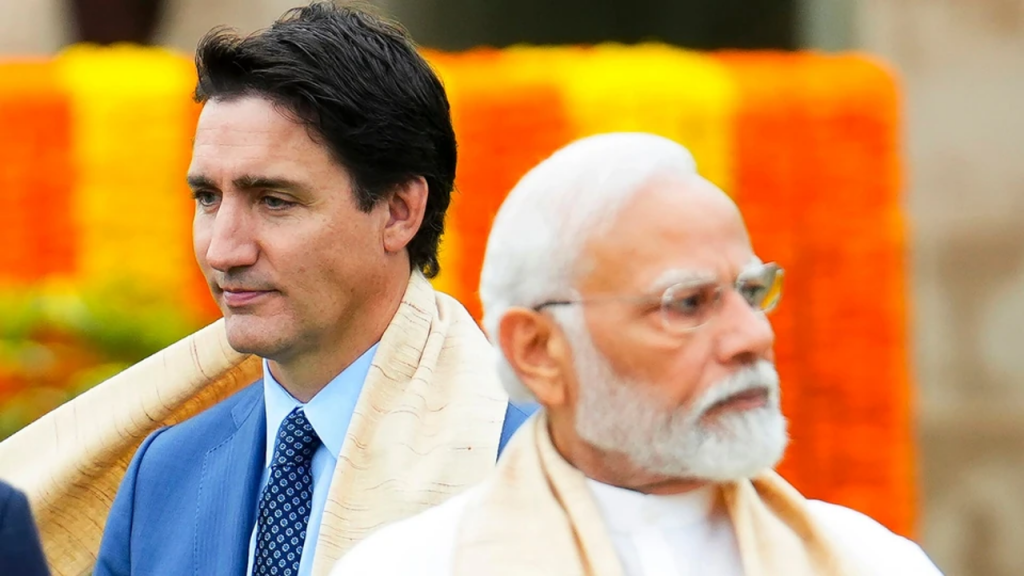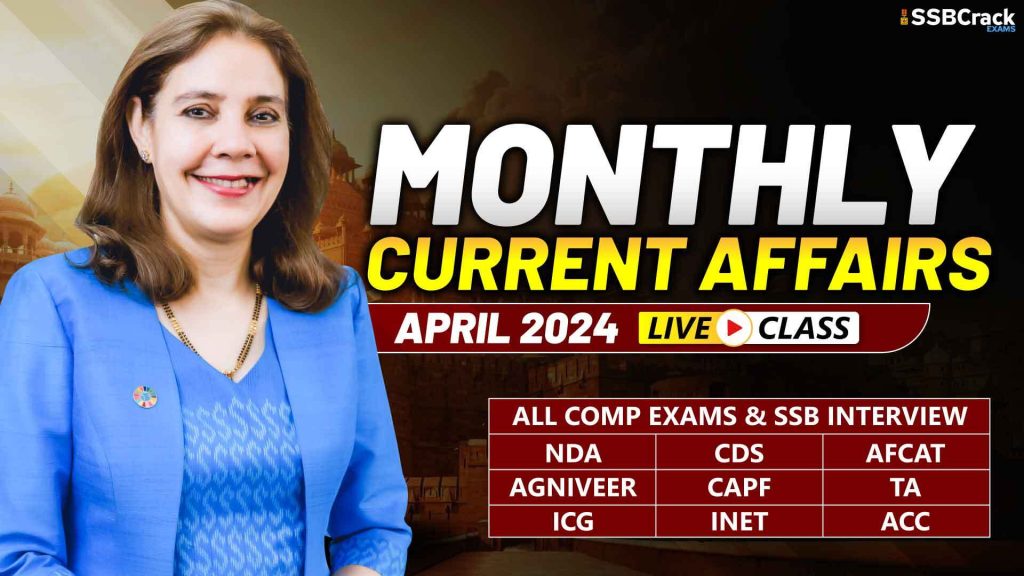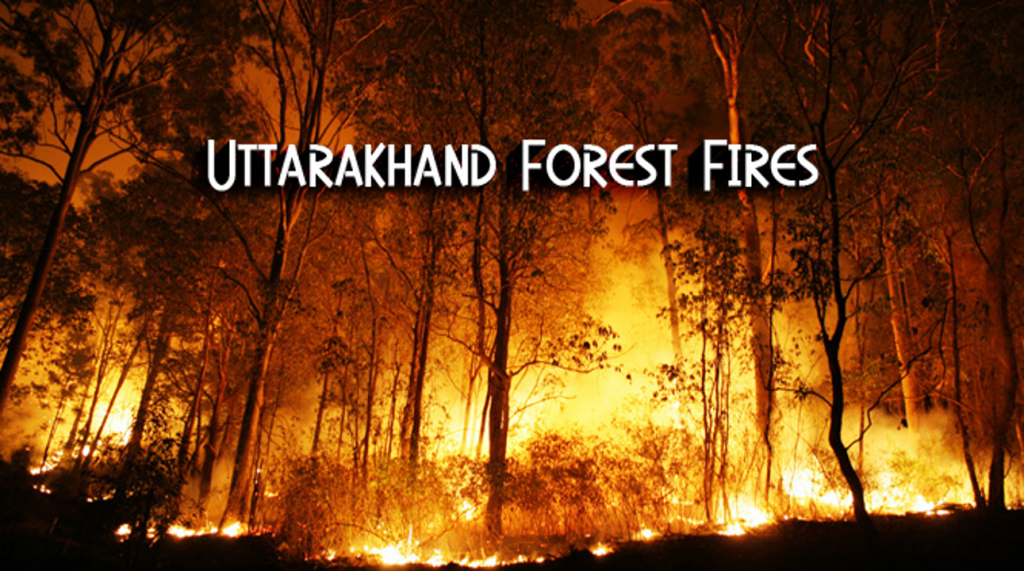Russian President Vladimir Putin, 71, won the recent Presidential elections by securing 87.97 per cent of the votes, results declared. With a six-year term set to follow, he will become Russia’s longest-serving leader in more than 200 years.
Vladimir Putin Won Russian Elections
Why In News
- Russian President Vladimir Putin, 71, won the recent Presidential elections by securing 87.97 per cent of the votes, results declared on Sunday (March 17) showed. With a six-year term set to follow, he will become Russia’s longest-serving leader in more than 200 years.
- Prime Minister Narendra Modi congratulated Putin on Monday. “Look forward to working together to further strengthen the time-tested Special & Privileged Strategic Partnership between India and Russia in the years to come,” he said in a post on X.
- Leaders of China and North Korea also congratulated the Russian President. The United States, meanwhile, denounced the polls.
- A White House National Security Council spokesperson said, “The elections are obviously not free nor fair given how Mr. Putin has imprisoned political opponents and prevented others from running against him.”
- The US reaction comes after similar criticism by European allies who questioned the conduct of the election.
- top three candidates of this year’s elections, in terms of the vote share they pulled after Putin Nikolai Kharitonov, Vladislav Davankov, Leonid Slutsky.
Alexei Navalny
Russia
- Russia continues to be one of the main suppliers of defence hardware to India, which has moved to diversify the sources of such equipment by concluding big-ticket deals with the US, France and Israel in recent years.
- Moscow also emerged as one of the leading suppliers of energy after India snapped up discounted Russian crude when Western states slapped sanctions on Russia after the invasion of Ukraine in 2022.
- Despite harsh Western sanctions, Russia’s economy has grown during the war. As a major growth engine, the Russian defence sector has been producing missiles, tanks, and ammunition nonstop.
Challenges Faced
- UKRAINE WAR – Russia controls nearly a fifth of Ukraine, barely changed since late 2022. Putin has not defined territorial goals but his ally Dmitry Medvedev said last month that Russia aimed to bite off much more of Ukraine, including Odesa and eventually Kyiv. Putin could just let the war grind on, calculating that time is on his side and awaiting the outcome of the U.S. election in November. Russia made its first advance in nine months by capturing the town of Avdiivka in February and Putin has said it February and Putin has said it will press further. Ukraine is running low on ammunition as a big U.S. aid package has been held up in Congress, and Russia has been encouraged by signs of discord and faltering resolve in the West.
- Putin could escalate by embarking on a new military mobilisation, on top of the call-up of 300,000 men he ordered in September 2022. But that first wave was chaotic and unpopular, prompting hundreds of thousands of Russians to flee abroad. The Kremlin has repeatedly said there is no need for a repeat. – Putin could seek a negotiated outcome. Russia has said this would have to be on its terms, leaving it in control of captured Ukrainian territory, which Kyiv has said it will never accept. Reuters exclusively reported last month that Putin had signalled to Washington that he was ready to agree a ceasefire that would freeze the war at current lines. Washington rejected this after contacts between intermediaries.
- TRADE AND ENERGY Challenge: re-routing trade to blunt Western sanctions Russia has lost most of its lucrative European energy market because of sanctions and the blowing-up of the Nord Stream gas pipelines. Progress on three major projects will be a gauge of his success in pivoting Russian trade eastwards: – A new “gas hub” in Turkey to enable Russia to reroute its gas exports – A new pipeline, the Power of Siberia 2, to bring another 50 billion cubic metres a year of Russian gas to to China via Mongolia – An expansion of the Northern Sea Route, made possible by the melting of Arctic sea ice, to link Murmansk near Russia’s border with Norway to the Bering Strait near Alaska.
- NUCLEAR WEAPONS Challenge: setting new security framework with U.S. or entering a new arms race. The New START treaty that caps the number of strategic nuclear warheads that Russia and the United States can deploy is due to expire in February If it lapses, both sides could then expand their arsenals without limits.
- Putin has said Russia must maximise its return on defence spending to prevent the US from “exhausting” it in the kind of arms race that sapped the Soviet Union during the the Cold War. He said Russia was continuing to develop “several new weapons systems”, while denying U.S. assertions that he plans to deploy nuclear weapons in space. Putin has suggested that Russia might resume nuclear testing, but only if the U.S. does so first. Russia says it is ready to engage in “strategic dialogue” with the U.S. but that this must include all issues affecting its security, including Ukraine.
- DOMESTIC ECONOMY Challenges: inflation, labour shortages, demographics. The economy grew 4.6% year-on-year in January, thanks to a massive increase in military production, but labour shortages and low productivity pose problems. Defence and security make up about 40% of the budget, squeezing other areas like education and health.
- Wages are rising, especially in regions where defence industries are concentrated. But Putin has failed to deliver on a 2018 promise to achieve a “decisive breakthrough” in living standards, and real incomes overall have stagnated for the past decade. Near-term priorities are to cut inflation, running at 7.6%, and to reduce budgetary strains. Putin has signalled this will mean higher taxes for firms and wealthier individuals. Further out, he wants to raise life expectancy and boost the birth rate with measures to support families, but is struggling to reverse Russia’s long-term population decline.
- RENEWING THE ELITE Challenge: refreshing an ageing team. Putin will be 77 by the end of his new term – though still younger than U.S. President Joe Biden when he was sworn in. Some leading figures in Putin’s circle are older than he is, including including FSB security chief Alexander Bortnikov (72), Security Council head Nikolai Patrushev (72) and Foreign Minister Sergei Lavrov (74 this week). Defence Minister Sergei Shoigu and Chief of Staff Valery Gerasimov (both 68) have kept their jobs despite fierce criticism from some pro-war commentators over Russia’s military failings in Ukraine.
- Putin has long shown himself to be reluctant to shake up his team, and critics have accused him of prizing loyalty over competence. Younger figures to watch include parliament speaker Vyacheslav Volodin (60), agriculture minister Dmitry Patrushev (46) and Putin’s former bodyguard Alexei Dyumin (51), the governor of Tula region. In a first significant personnel change, Kovalchuk, 46, the son of Putin’s businessman friend Yuri Kovalchuk, left his post as head of the Inter RAO utility company this month after 15 years to join the presidential administration, Vedomosti newspaper reported.
- 20th ASEAN-India Summit & 18th East Asia Summit Highlights
- Manipur Police Register Criminal Case Against Assam Rifles
- Pakistan’s Ex-PM Imran Khan Jailed For 3 Years In ‘Toshakhana Case’
- Four Years After Removal Of Art 370: How Is The Actual Situation In Kashmir?
- Putin’s Critic Alexei Navalny Sentenced To 19 More Years In Prison
- Delhi Services Bill Tabled In Lok Sabha: Govt Of NCT Of Delhi (Amendment) Act, 2023
- Gurugram Nuh Violence: How A Religious Procession Turned Into A Communal Clash
- Govt Imposes Import Restrictions On Laptops, Tablets, Computers
- How Climate Change Is Altering The Colour Of The Oceans?
- New IPCC Assessment Cycle Begins: Why Is It So Significant?
- Difference Between NATO Vs Russia? [Explained]
- Italy Regrets Joining China Belt & Road Initiative (BRI)
- What Is Doping: Why Is It Banned In Sports?
- India Tiger Census 2023: India Is Now Home To 75% Of Tigers In The World
- Military Coup In Niger – President Detained, All Institutions Suspended
- No-Confidence Motion Against PM Modi’s Government
- Elon Musk’s SpaceX Rocket Punches Hole In Ionosphere
- Israeli Parliament Passes Controversial Law Stripping Supreme Court Of Power
- Significance Of 1999 Kargil War: How It Became A Major Game Changer For Indian Military?
- Controversy Over Movie Oppenheimer Gita Scene: How Are Films Certified In India?
- The Curious Case Of Qin Gang: China’s Foreign Minister Who Went Missing
- Twitter’s Iconic Blue Bird Logo Set To Be Replaced By An X Logo
- India Pulls Out Of Games In China Over Stapled Visas For Arunachal Athletes
- PM Modi Urges Sri Lanka President To Implement 13th Amendment
- India Pulls Out Of Games In China Over Stapled Visas For Arunachal Athletes
- Rajasthan CM Sacks Minister After Remarks Over Crimes Against Rajasthan Women
- Manipur Sexual Assault: Video Sparks Outrage Across The Country
- BRICS Summit 2023 In August: Why Putin Won’t Go To South Africa For The Summit?
- Robert Oppenheimer: The Father Of Atomic Bomb, Impact Of Bhagavad Gita On Him
- Russia-Ukraine Black Sea Grain Deal, Why Russia Has Halted It?
- Henley Passport Index 2023, India Passport Ranked 80th
- Indian Opposition Parties Form ‘INDIA’ Alliance, 26 Parties Unite For 2024
- Britain Joins Asia-Pacific Trade Group ‘CPTPP’ – Biggest Trade Deal Since UK Left EU
- NITI Aayog Report On National Multidimensional Poverty Index
- PM Modi UAE Visit: Highlights & Key Takeaways
- PM Modi’s Visit To France: Highlights & Key Takeaways
- NATO Summit Vilnius 2023: Highlights & Key Takeaways
- Turkey Supports Sweden’s Bid For NATO Membership At Vilnius Summit 2023
- Why ISRO Wants To Explore The Moon’s South Pole: Chandrayaan-3 Mission
- Bengal’s Panchayat Polls Turned Violent: SSB Interview Topic 2023
- First Ever IIT Campus Outside India In Tanzania
- RBI’s Report On “Internationalisation Of Rupee” Why And What Are The Benefits?
- Japan To Release Nuclear Wastewater Into Ocean – Gets Approval From IAEA
- PM Modi Chairs 23rd SCO Summit: Highlights & Key Takeaways
- Israel Raids Jenin Camp: Massive Military Operation In West Bank
- Dutch King Apologizes For Netherlands’ Role In Slavery: A Look At The Dutch Role In History
- Constitutional Crisis In Tamil Nadu: The Tussle Between Governor & DMK Government
- Why Has France Been Engulfed By Protests Again?
- Paris Summit – World Leaders Unite For A New Global Financing Pact
- India Ranked 67th On Energy Transition Index – Sweden On Top Of List By World Economic Forum
- Four Minor Planets Named After Indian Scientists
- NASA Recovers 98% Water From Urine & Sweat On ISS: Breakthrough In Long Space Missions
- ESA Space Telescope Euclid Is All Set For Launch To Observe Dark Side Of Universe
- PM Modi’s Trip To USA: Key Takeaways & Highlights
- PM Modi-Led Yoga Session Creates A New Guinness World Record
- Sajid Mir, The Mastermind Behind 26/11 – His Designation As Global Terrorist Blocked By China
- UN Adopts First Historic ‘High Seas Treaty’ To Protect Marine Life
- International Yoga Day 2023 – How It Was Celebrated Across The World?
- Gender Apartheid – Why Is Afghanistan At Stand Off With UN?
- Gandhi Peace Prize 2021 For Gita Press Why It Triggered A Congress-BJP Brawl?
- The New Pride Flag – Why The Change & What The Colours Signify?
- 48 Years Of Emergency – PM Modi Refers It As India’s Darkest Period In Mann Ki Baat
- Groundwater Extraction Has Tilted Earth’s Spin – How Will It Impact The Climate Change?
- Europe’s Worst Migrant Boat Disaster – 78 Dead, Hundreds Missing Off Greek Coast
- MOVEit Global Hacking Attack – Government Agencies In The USA Targeted
- Karnataka Govt Decides To Repeal Anti-Conversion Law: Why Was The Law Controversial?
- IIT Bombay Among Top 150 Varsities In QS Rankings 2024
- China’s Xi Jinping Backs ‘Just Cause’ Of Palestinian Statehood – Chinese Middle Eastern Diplomacy
- Turkey Won’t Back Sweden’s Bid To Join NATO – Why Is Erdogan Against Sweden’s Application
- UN Report Reveals Chronic Bias Against Women – 25% Of Population Thinks Beating Wife Justifiable
- Zinnai – Space Flower Grown On International Space Station By NASA – Why Is It Significant?
- Who Are Meira Paibis: Manipur’s ‘Torch-Bearing’ Women Activists?
- USA Set To Re-Join UN Cultural Agency UNESCO
- CoWIN Data Leak – Aadhaar, PAN Card Info, On Covid Portal, Made Public By Telegram
- $10bn Investment Deals Signed At Arab-China Summit – Is Arab World Moving Towards China?
- Cyclone Biparjoy Turns Into Extremely Severe Cyclonic Storm – 10 Points To Know
- PM Modi’s Trip To Egypt: Highlights & Key Takeaways
- El Nino Returns After 7 Years: Will Impact Second Half Of Monsoon
- Europe’s Copernicus Programme Completes 25 Years: SSB Interview Topic
- Trump Charged Over Secret Documents In A First For An Ex-US President
- 39 Years Since Operation Bluestar: What Actually Happened?
- Wagner Chief Vows To Topple Russian Military Leaders
- Arctic Could Be Ice-Free In The Summer By 2030: SSB Interview Topic
- PM Modi’s School In Gujarat Will Host Students From Across India
- Major Dam Collapse In Ukraine – Accuses Russia Of Blowing Up Kakhovka Dam
- Microsoft To Pay $20 Million For Illegally Collecting Children’s Info
- NIRF Ranking 2023: IIT Madras Tops The List For 5th Consecutive Year
- TRAI’s ‘Digital Consent Acquisition’ (DCA) Facility’- Unified Platform For Customers’ Consent
- 34th Anniversary Of Tiananmen Square Protest – Hong Kong Police Detains Activists
- Asia Security Summit 2023 Shangri-La Dialogue Begins Amid China-US Tensions
- Coromandel Express Accident – How 3 Trains Derailed, Crashed At Same Place In Odisha
- Law Commission Against Scrapping Of Sedition Law, Says It Will Protect India’s Unity
- Radical Changes In NCERT Textbooks – Poverty, Inequality, Democracy Among Topics Removed
- India GDP Data Beats Expectations – Stays Fastest Growing Economy
- Maharashtra’s Ahmednagar To Be Renamed Ahilyanagar
- Scientists Discover 2nd Moon Near Earth Orbiting Since 100 BC
- Erdogan’s Victory In Turkish Election – What Can Be The Impact On India?
- NASA Alert! GIANT Asteroid Racing Towards Earth
- Uganda Signs Anti-Gay Law With Death Penalty – Sparks Global Outrage
- RBI’s ‘Lightweight’ Payments System For Emergencies – An Alternative To UPI, NEFT, RTGS
- Significance Of ISRO’s Newly Launched NavIC Satellite In Regional Navigation
- What Is The Model Prisons Act – Reforms In The Indian Prisons System?
- Global Plastic Treaty – Negotiations Underway For A Plastic-Free Planet: SSB Interview Topic
- China Sends First Civilian Astronaut To Space As Shenzhou-16 Blasts Off
- US Congressional Panel Suggests Making India Part Of NATO Plus: SSB Interview Topic
- India Conducts National Cyber Defence Exercise
- What Is XPoSat, India’s First Polarimetry Mission?
- Germany Falls Into Recession As Inflation Hits Economy
- Bangladesh Faces Fuel Crisis – Dollar Shortage Issue
- Australian Universities Ban Student Applications From Certain Indian States
- What Is Volt Typhoon: China-Backed Hackers Targeting USA?
- Death Of Six Cheetahs At Kuno National Park: SSB Interview Topic 2023
- India-Australia Relations Get Stronger – What Is Migration Deal?
- What Is Sengol: To Be Placed In The New Parliament Building?
- Annual Misery Index – India Ranks 103 Out Of 157 Nations: SSB Interview Topic
- Russia Pressures India For Help To Avoid Getting Blacklisted By FATF
- What Is Mission LiFE – How It Will Fight Against Climate Change?
- What Is The ‘Pandemic Treaty’: How WHO Could Fight Future Pandemics?
- Assam CM Himanta Biswa Sarma Announces Withdrawal Of AFSPA
- El Nino Could Hit World Economy By $3 Trillion? SSB Interview Topic 2023
- Tussle Between Delhi Govt And Centre – Delhi Ordinance Issue: SSB Interview Topic
- China Braces For New Covid Wave With Up To 65 Million Weekly Cases
- Colour-Coded Warnings By The IMD: SSB Interview Topic 2023
- Saudi Scripts History As First Arab Woman Astronaut Lifts Off Into Space
- Controversy Behind Inauguration Of Parliament Building: SSB Interview GD Topic
- Uniform Civil Code: Is Time Ripe For the Indian Government To Act On It?
- Indian-Origin Ajay Banga To Be The Next World Bank President
- AI ‘Godfather’ Geoffrey Hinton Quits Google Warns Of Danger Ahead
- India Ranks 161 Out Of 180 Countries – World Press Freedom Index
- Supreme Court Rules It Can Directly Grant Divorce To Couples: SSB Interview GD Topic
- Kashmir All Set To Hold G20 Summit In India
- Go First Airlines Files For Insolvency: SSB GD Topic
- India Becomes Europe’s Largest Supplier Of Refined Fuels
- What Is The Met Gala – Fashion’s Biggest Night?
- Clashes In France Against Pension Reforms By Macron Govt
- Why Are Indian Wrestlers Protesting Against WFI Chief?
- China Offers Ukraine To Mediate To End War With Russia
- 50 Years Of Kesavananda Bharati Case: SSB Interview Lecturette Topic
- Assam-Arunachal Pradesh Border Dispute: SSB Interview Lecturette Topic 2023
- Same-Sex Marriages In India: Key Supreme Court Verdicts On LGBTQ Rights
- What Is China Plus One? SSB Interview Lecturette Topic 2023
- India-Maldives Relations: SSB Interview Lecturette Topic 2023
- India-Bangladesh Relations: SSB Interview Lecturette Topic 2023
- India-Japan Relation: SSB Interview Lecturette Topic 2023
- Geopolitical Importance Of The Indian Ocean: SSB Interview Lecturette Topic 2023
- All About Paris Club: SSB Interview Lecturette Topic
- PM Narendra Modi Has Been Named The Most Popular Leader In The World
- Hindenburg Report On Adani – Here’s What You Need To Know
- India At WEF Davos Summit 2023: Here Are 10 Key Highlights
- Pakistan Economic Crisis 2023: SSB Interview Topic [Fully Explained]
- Joshimath Crisis: What Does “Land Subsidence” Mean, And Why Does It Happen?
- Top 10 Animal Conservation Projects In India [MUST WATCH]
- What Is Shanghai Cooperation Organisation (SCO) Summit 2022? [Fully Explained]
- 20 SSB Interview Questions On Russia Ukraine Crisis
- What Is The (India-Israel-UAE-USA) I2U2 Summit? [Fully Explained]
- What Is International North-South Transport Corridor (INSTC)?
- What Is Sri Lankan Crisis? [Fully Explained]
- What Is The BIMSTEC Grouping And How Is It Significant? [EXPLAINED]
- What Is The Places Of Worship (Special Provisions) Act, 1991? [Explained]
- What Is Bodo Accord | SSB Interview Notes [Fully Explained]
- What Is AFSPA: Armed Forces (Special Powers) Act?
- What Is G20 Or Group Of Twenty Countries?
- What Is AFSPA: Armed Forces (Special Powers) Act?
- What Is The Financial Action Task Force (FATF)? [Fully Explained]
- What Is Quadrilateral Security Dialogue (QUAD)?
- Difference Between NATO Vs Russia [Expained]
- What Is United Nations Security Council (UNSC) [Explained]
- Everything You Need To Know About SAARC: South Asian Association For Regional Cooperation
- All About Russia Ukraine War: SSB Interview Topic [Fully Explained]




























